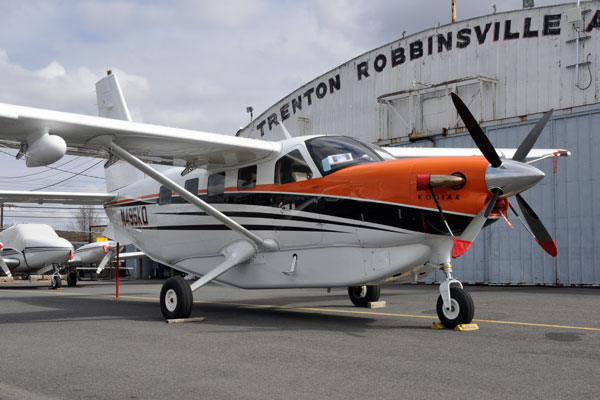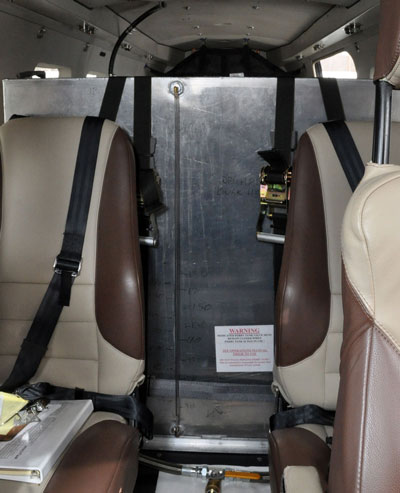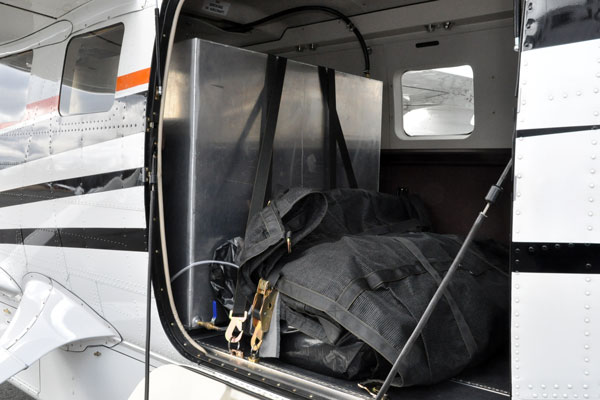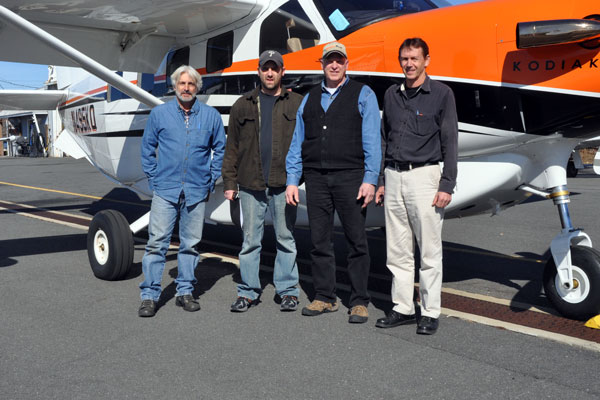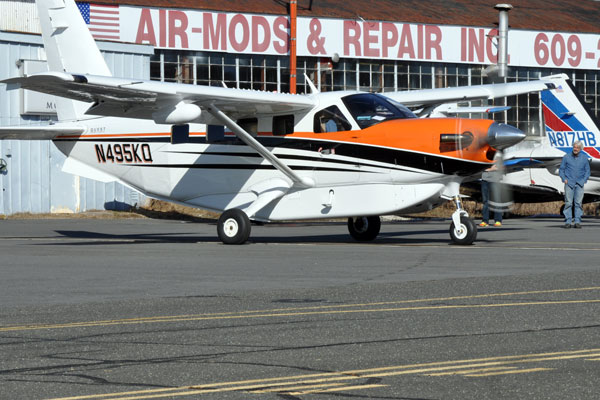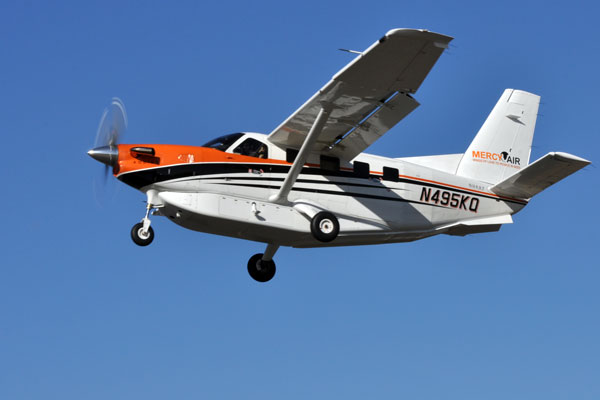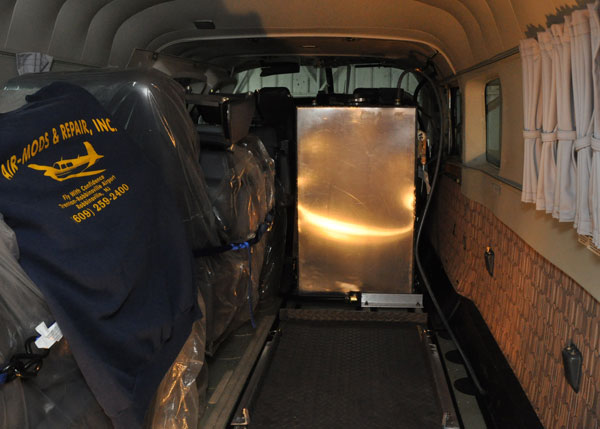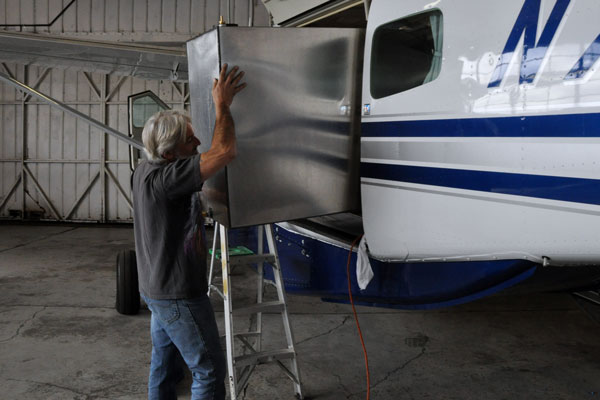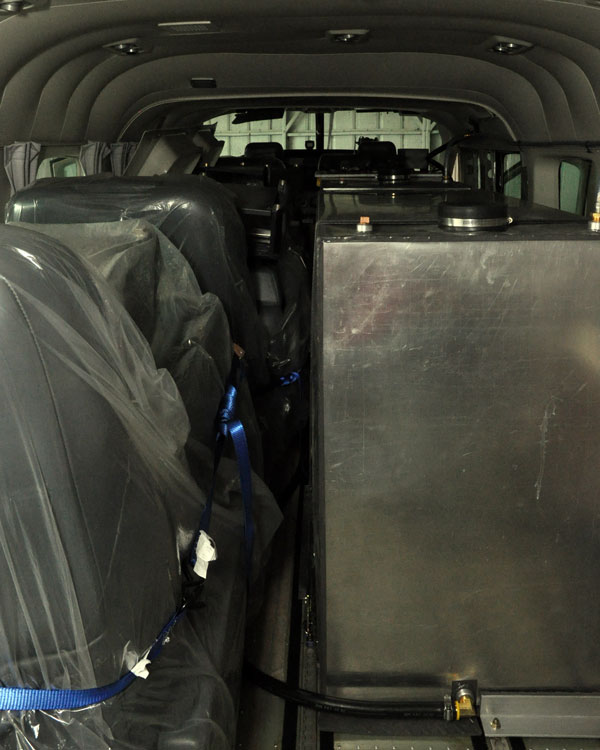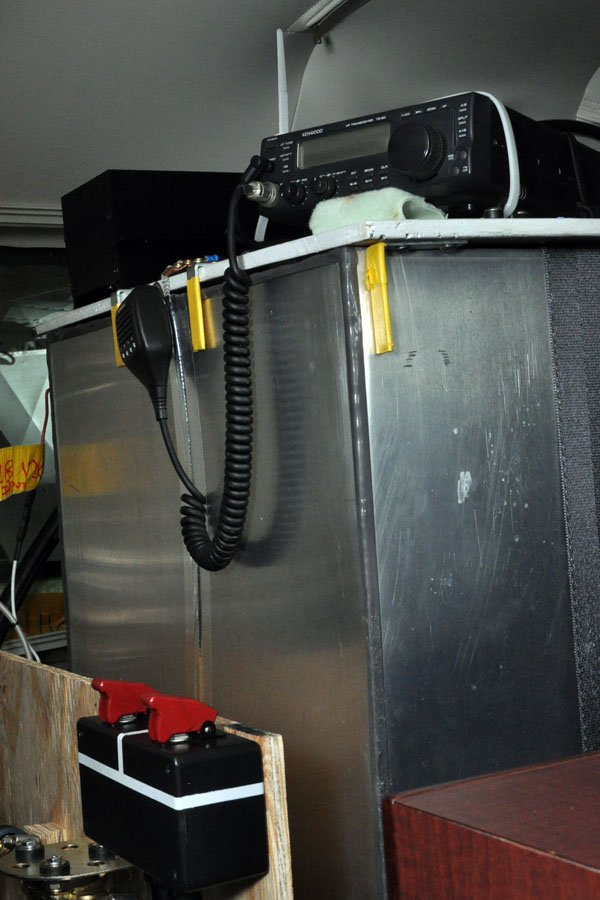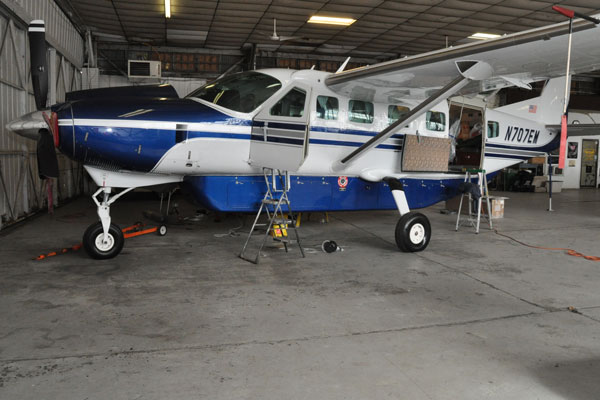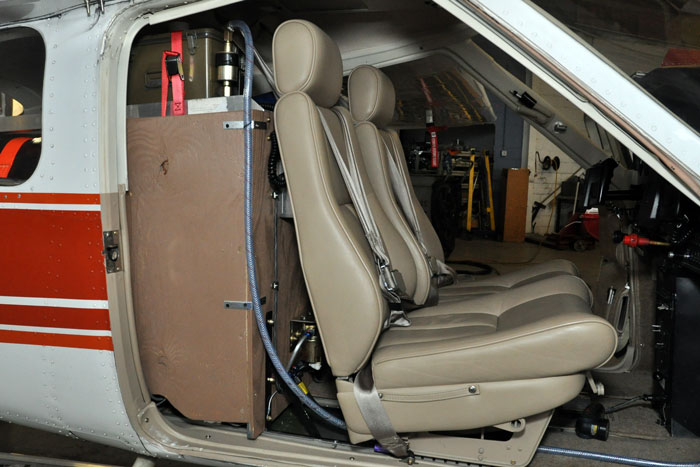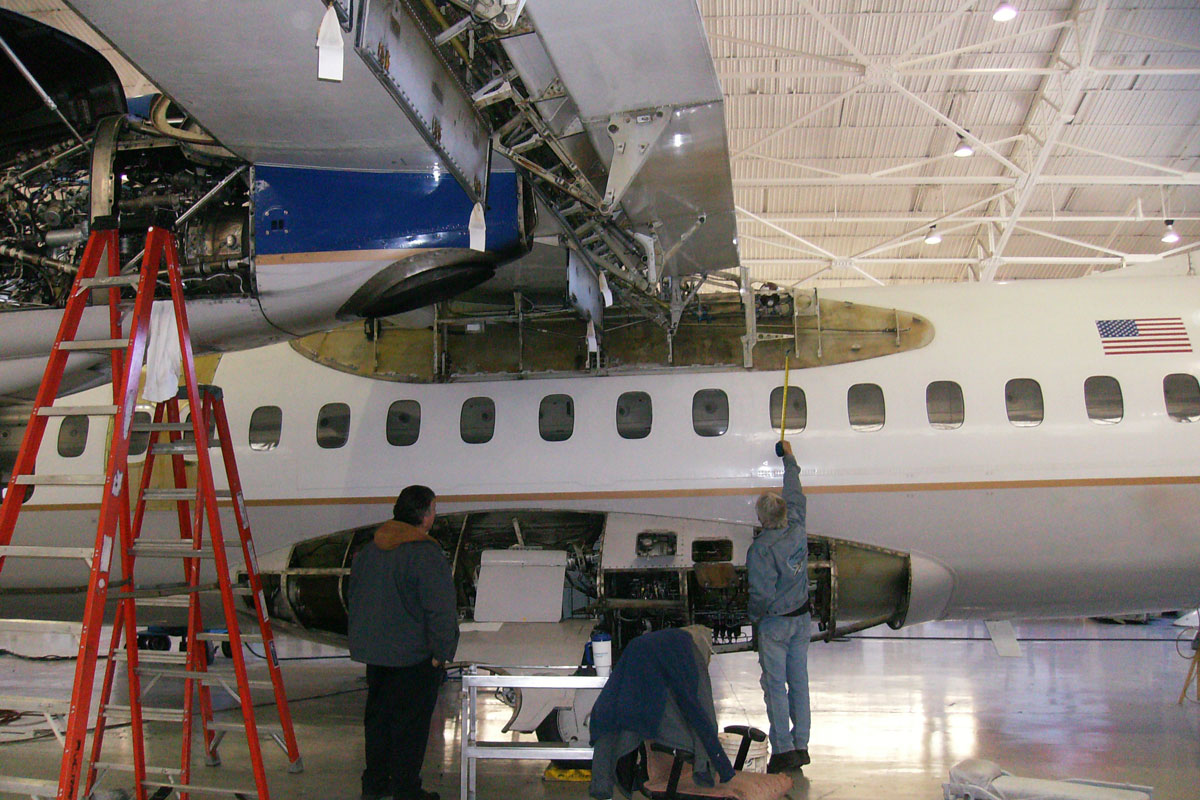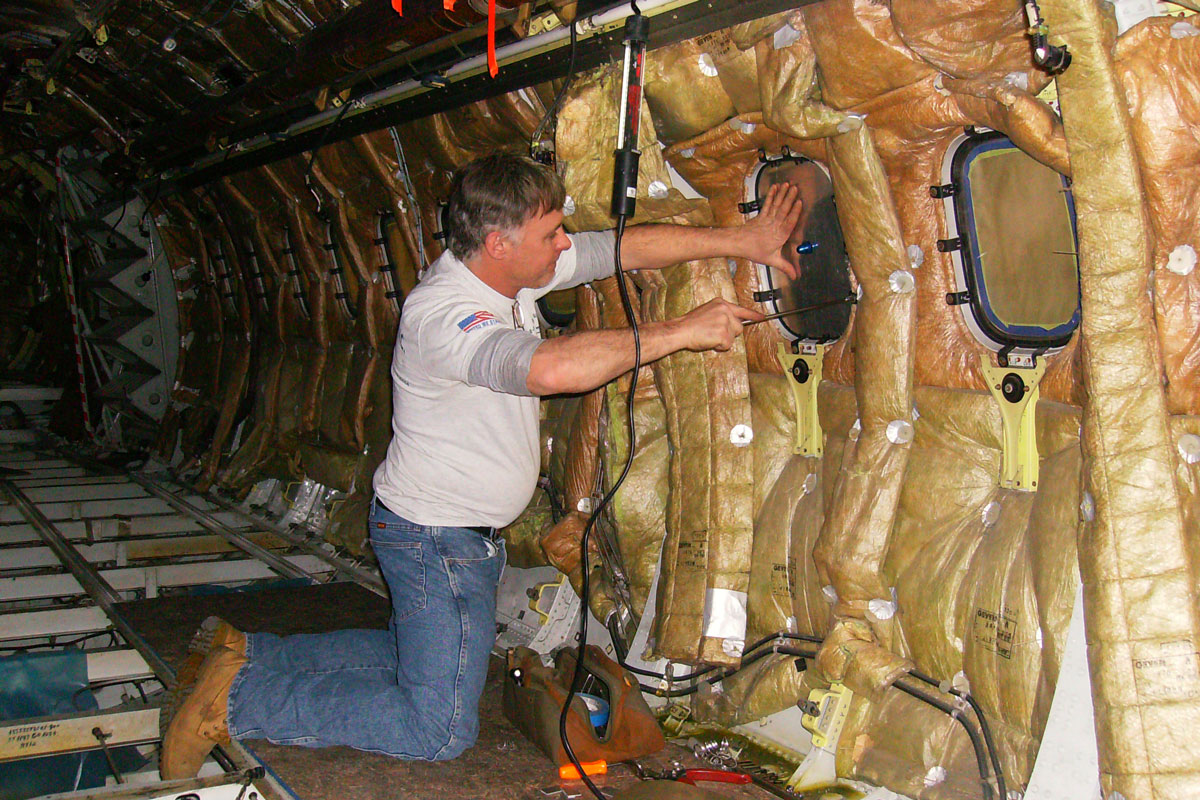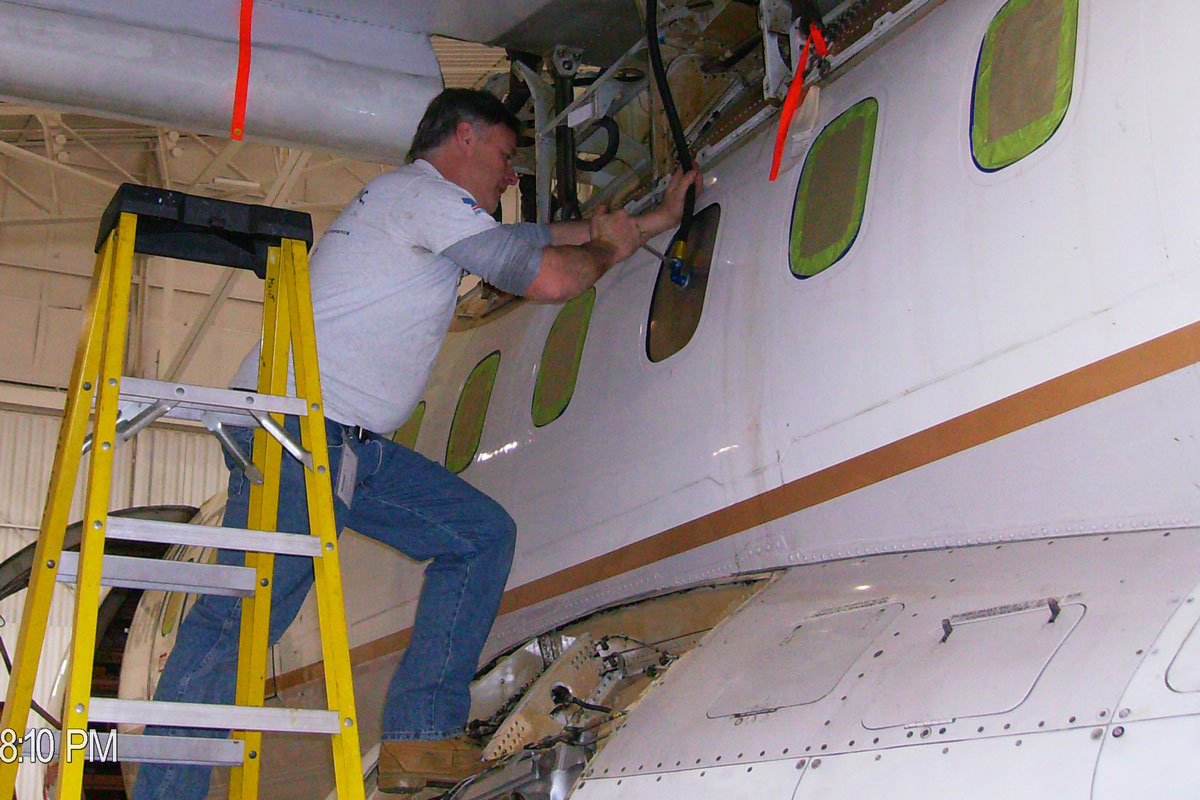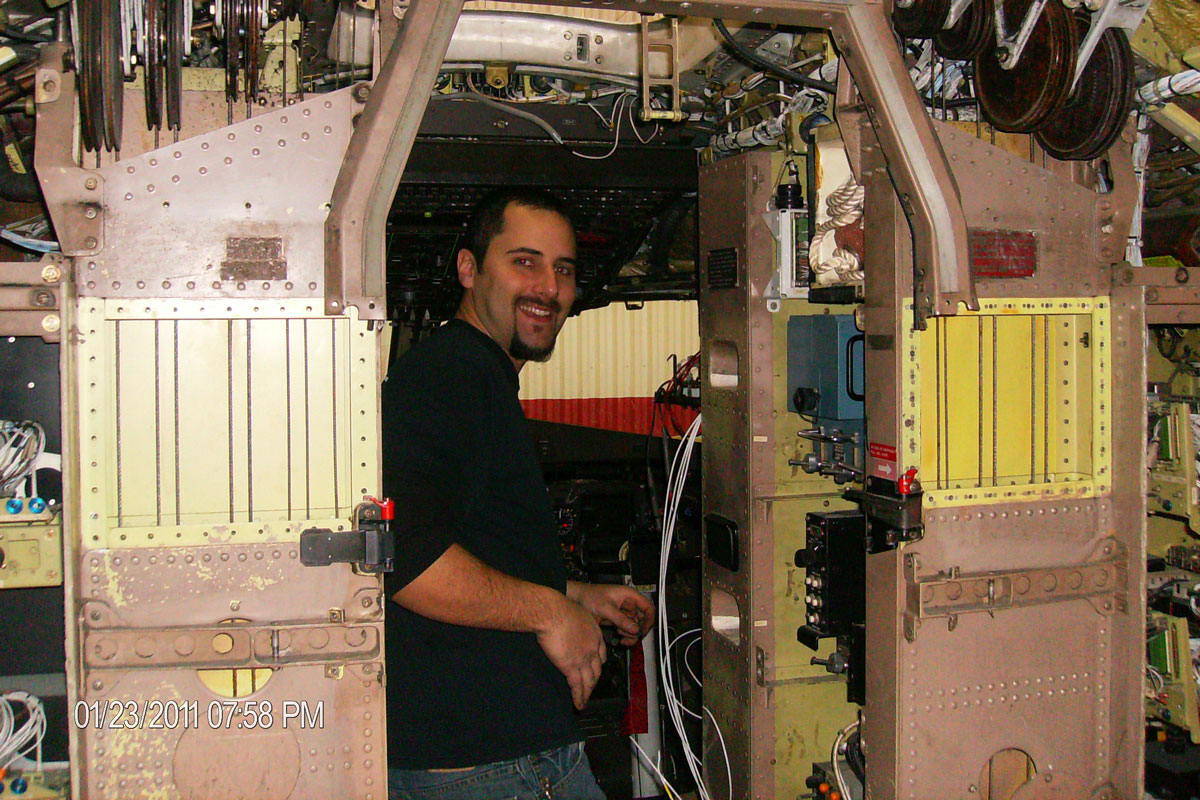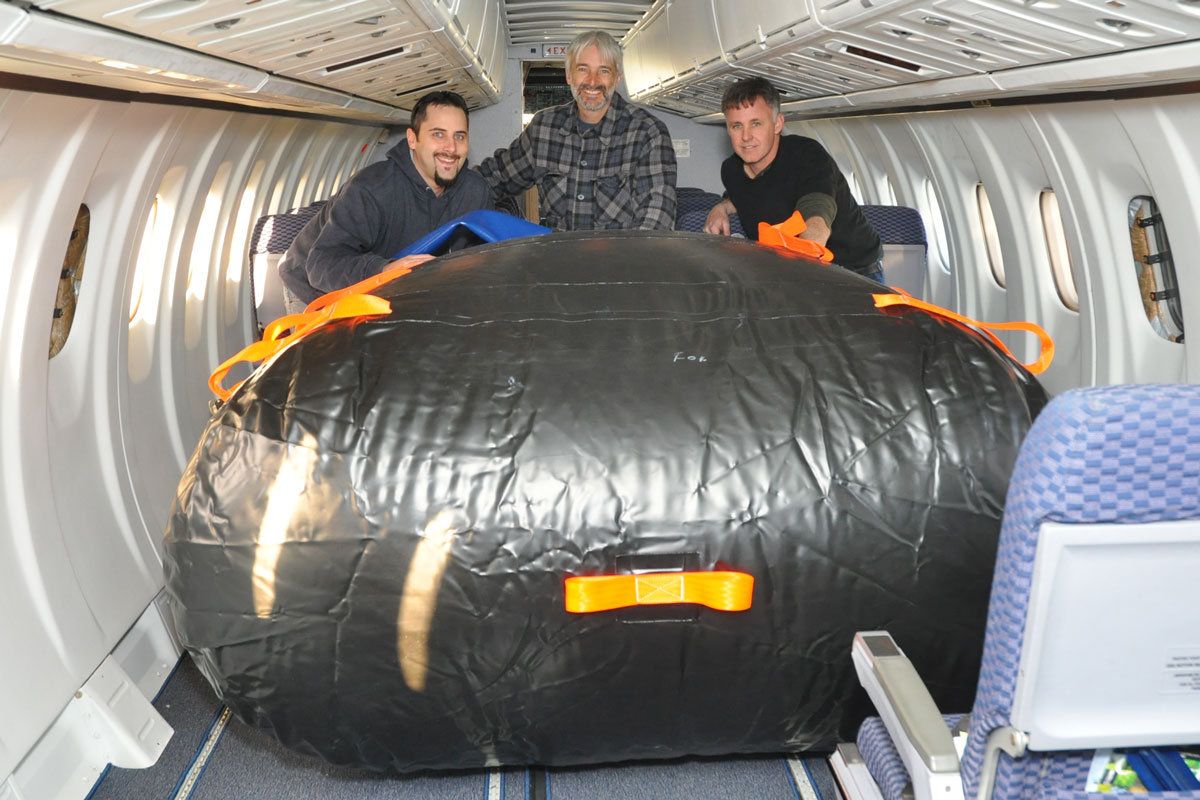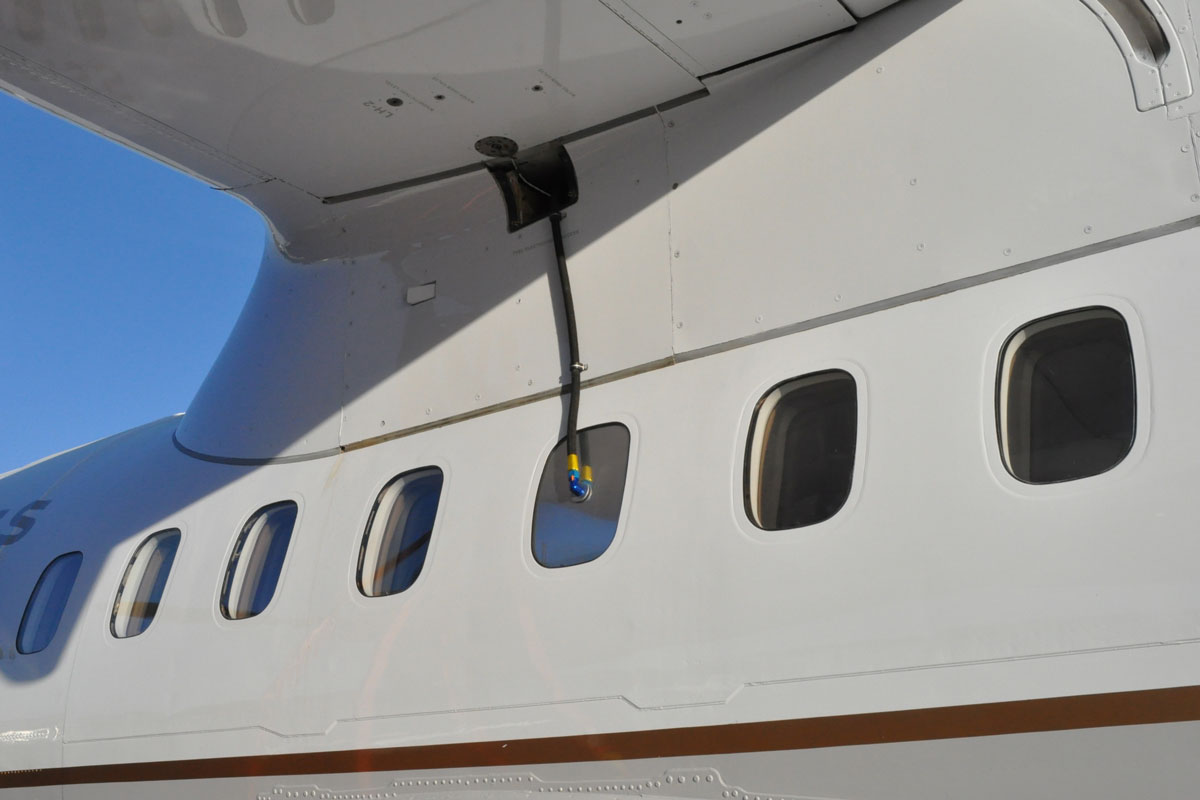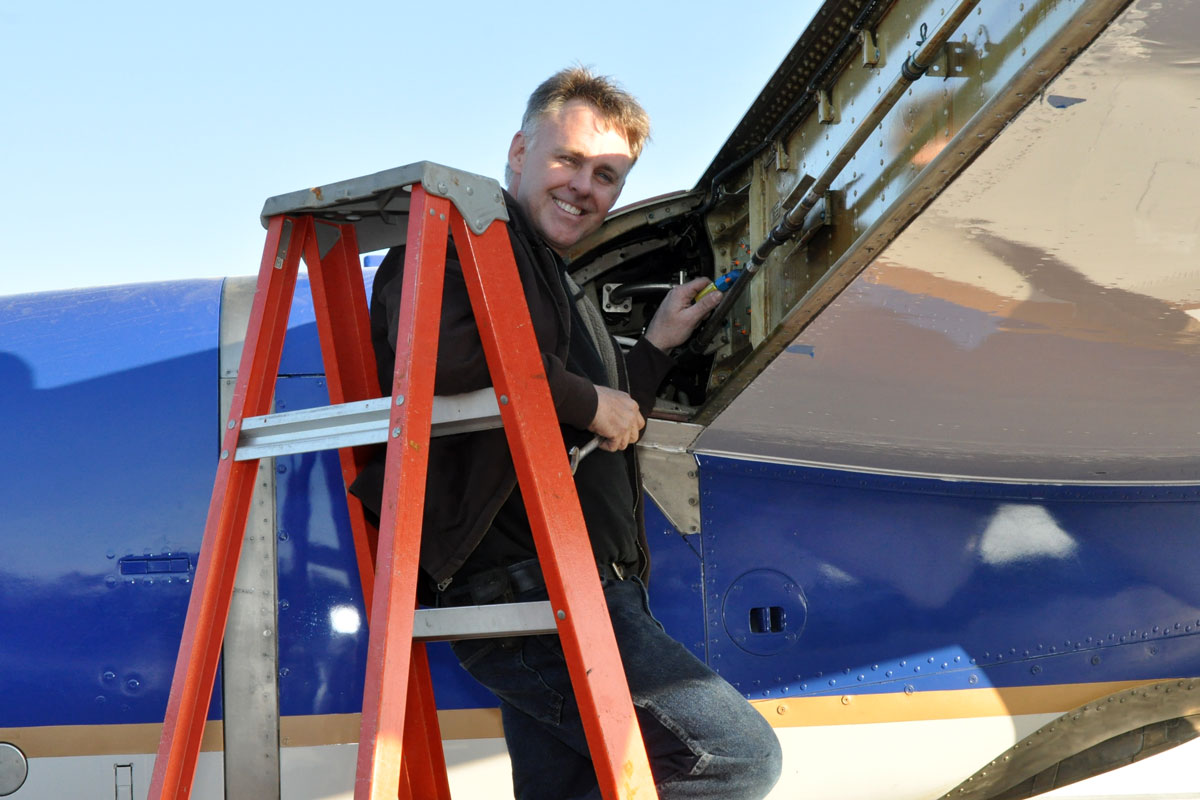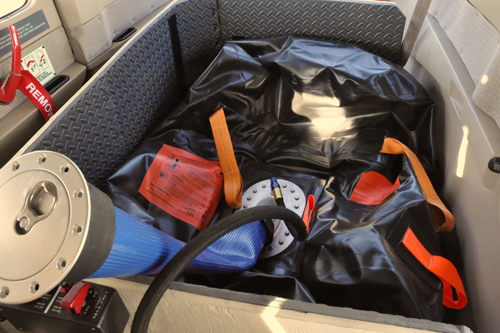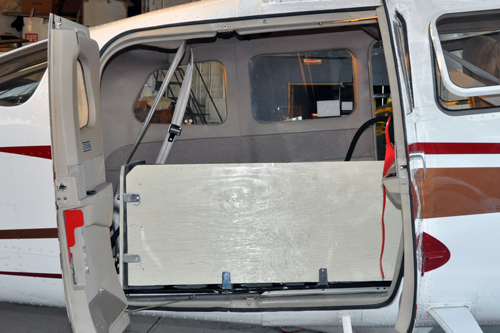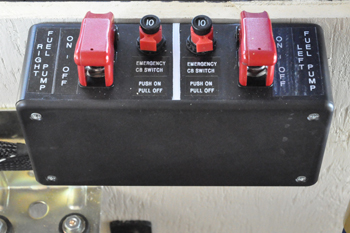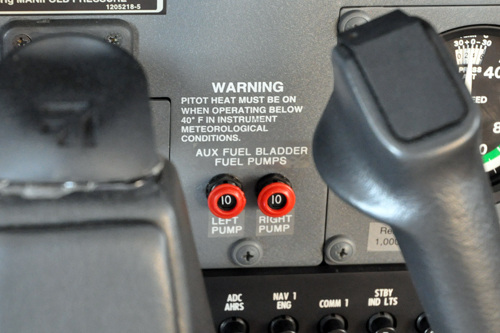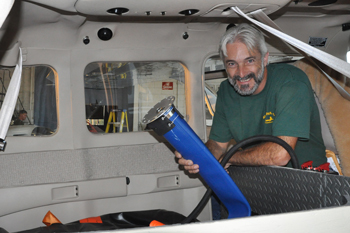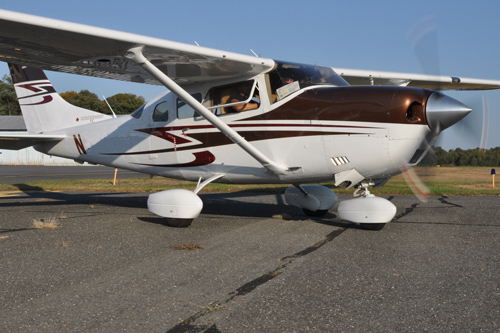Whether you want to fly around the world, across the ocean, or just want to fly long distances non-stop, our ferry tank installations provide the extra fuel capacity to get you there safely.
We offer custom-made rigid (aluminum) ferry tanks and Turtle-Pac’s collapsible ferry tanks – depending on your aircraft and mission. While some installations may call for rigid tanks, most of our installations use Turtle-Pac’s collapsible bladders.
Turtle-Pac has been in business since 1978 providing solutions for marine and aviation applications and offers a variety of sizes to fit your mission and airplane. Air-Mods is Turtle-Pac’s east coast aviation installation facility and is well-equipped to handle even the most sophisticated installations. From light singles to twin turboprops, our professional installations give you the confidence in your fuel system when you need it the most.
If yo![]() u would like Air-Mods to provide an estimate for your next ferry tank installation, please click on the button to download the Information Form, provide the information requested, and email it back to us. We’ll provide a quote as soon as possible.
u would like Air-Mods to provide an estimate for your next ferry tank installation, please click on the button to download the Information Form, provide the information requested, and email it back to us. We’ll provide a quote as soon as possible.
Quest Kodiak 100
Mercy Air is an independent Christian-humanitarian aid aviation service. The organization provides safe, professional and cost effective aviation service to the wider humanitarian aid and mission community in southern Africa. For more information on this mission-driven organization, see their website.
The Quest Kodiak 100 is the perfect airplane for the unimproved airstrips in which Mercy Air operates. The Kodiak can take off in under 1,000 feet at full gross weight, climb at over 1,300 feet per minute, and, at touchdown, it only needs 705 feet to bring the full gross weight of 7,305 pounds to a stop–even on rough, rumbly, bumpy strips.
Cessna Caravan
The installation or two rigid tanks into this caravan doubled the fuel capacity from 320 gallons to 640 gallons…certainly enough fuel to fly the longest legs during its trip to Kazakhstan in Central Asia.
Cessna Cardinal (177RG)
This 1975 Cardinal was a fun project! The airplane’s typical missions include a trip from the owner’s home base in Florida across the Caribbean Sea to South America, back and forth to Washington State, and other non-stop, long-leg flights. In addition to the airplane’s existing fuel capacity, the long non-stop span over the Caribbean requires additional fuel…plus the owner wanted reserves while flying in remote parts of the world. The installation of the 160-gallon Turtle-Pac, while a weight and balance challenge, was not a big issue. The bigger issue was replenishing the oil supply while enroute. With enroute flight capacity approaching 20 hours, and understanding each Lycoming’s normal oil burn, it’s critical to be able to add engine oil while airborn. This was the fun part! We designed and fabricated an oil reservoir (shown below behind the co-pilot’s head-rest) with its own oil pump plumbed to the engine.
As seen above and below, we fabricated a structure to contain the 160-gallon Turtle-Pac. Since we engineered the exact placement of the bladder within the CG limits of the airplane, we wanted to assure that the weight didn’t shift in-flight.
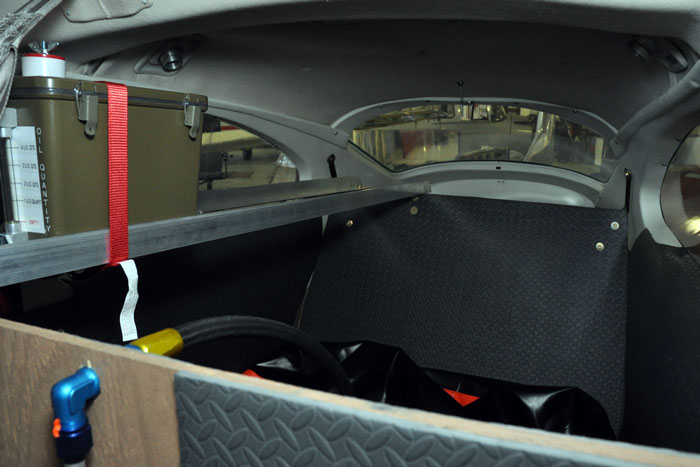
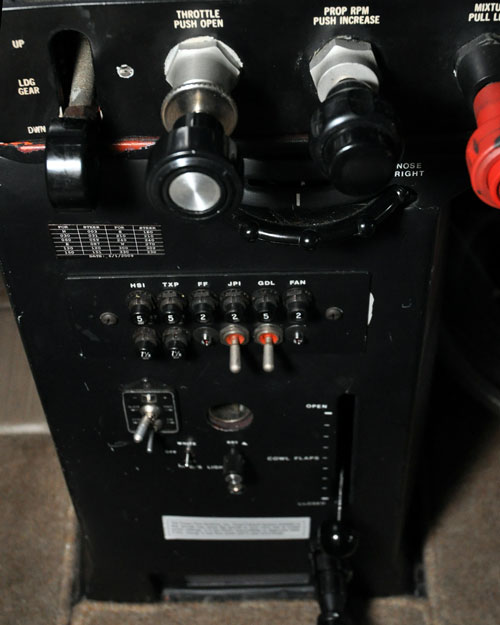
We also installed convenient toggle switches with indicator lights for both of the fuel pumps on the circuit panel pedistal
Mooney M20K (231)
This 231 came to us several months ago in need of paint and interior. The owner was torn between two options: 1) sell it as is or 2) have it painted, replace the interior, and install ferry tanks and fly it back to Italy. We’re happy that the owner went with option 2 and below are the results.
The owner was on a tight time-frame – needing to get the airplane back to Italy in August. Fortunately, Reese Aircraft/KD Aviation, Inc. just happened to have an opening. We got the airplane in the paint shop and Reese turned it around on-schedule as promised.
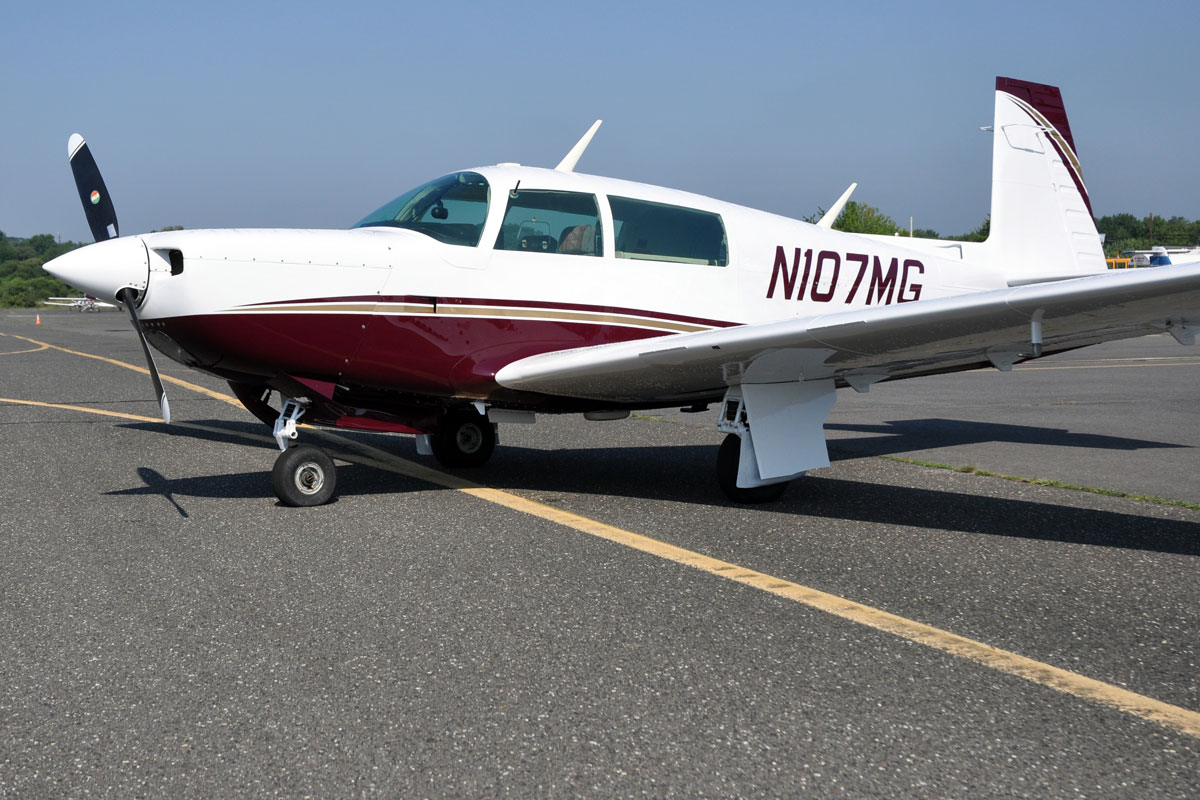
| Next was interior. Behind the custom ferry tank installation, Shane replaced the original interior with new side panels, carpet, and headliner. The owner is waiting to get the airplane back to Italy to have the seats recovered in matching Italian Leather – nice!
The ferry tank installation includes two Turtle-Pacs – a 66 gallon tank where the two back seats would normally reside and a 18 gallon tank for the storage compartment. |
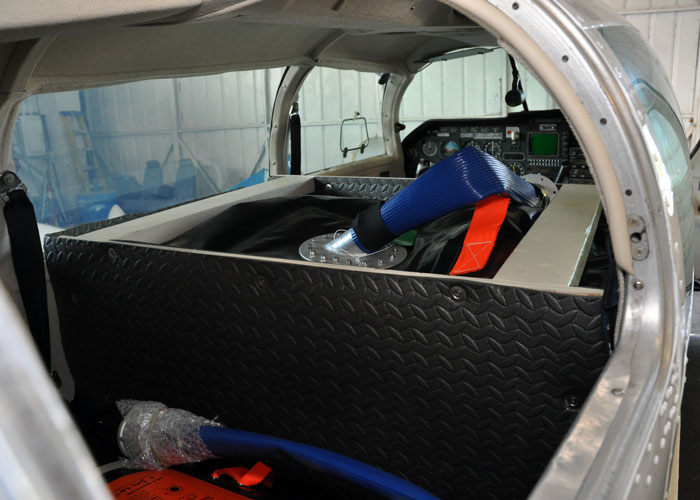 |
| The 18 gallon tank in the storage compartment adds the option for an extra margin of safety for those long legs across the Atlantic. | 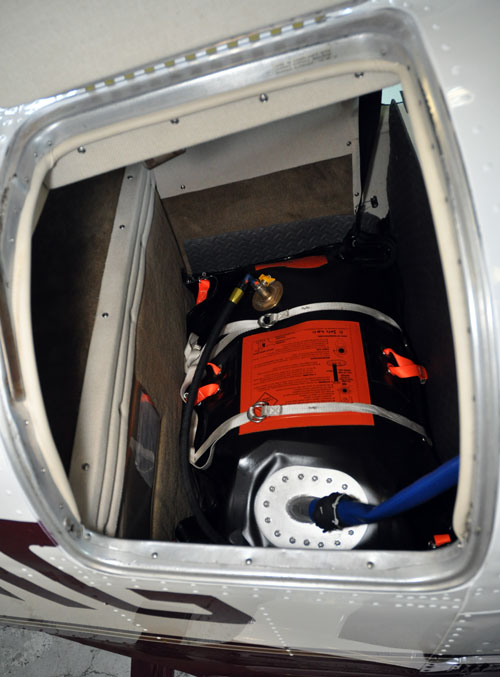 |
| Matt reveals the pilot’s easy access to the fuel selector valves and redundant fuel pumps.
The “Italian Job” is now ready to go and should be departing by the end of August for its new home. We’ll be tracking its journey! |
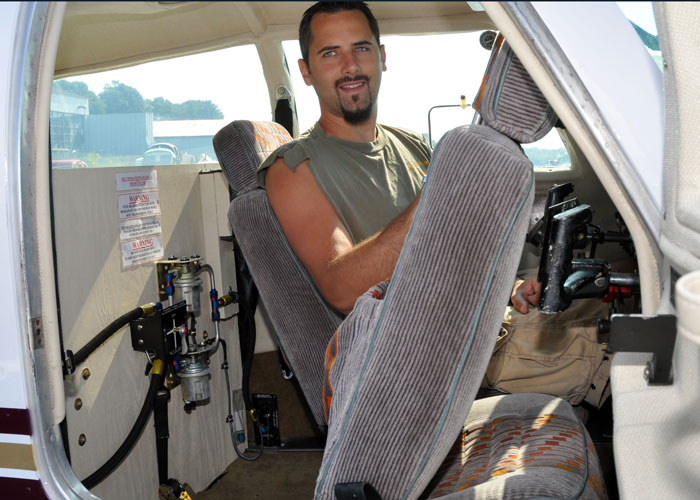 |
Beechcraft Baron G58
This new Baron was flown direct from the factory to us and arrived with 12.8 hours on the hobbs meter. The installation, completed in early May 2011, included three Turtle-Pacs – two in the cabin and one in the nose baggage compartment. The airplane’s trans-oceanic destination is New Zealand with a 2500+ mile leg to Hawaii first.
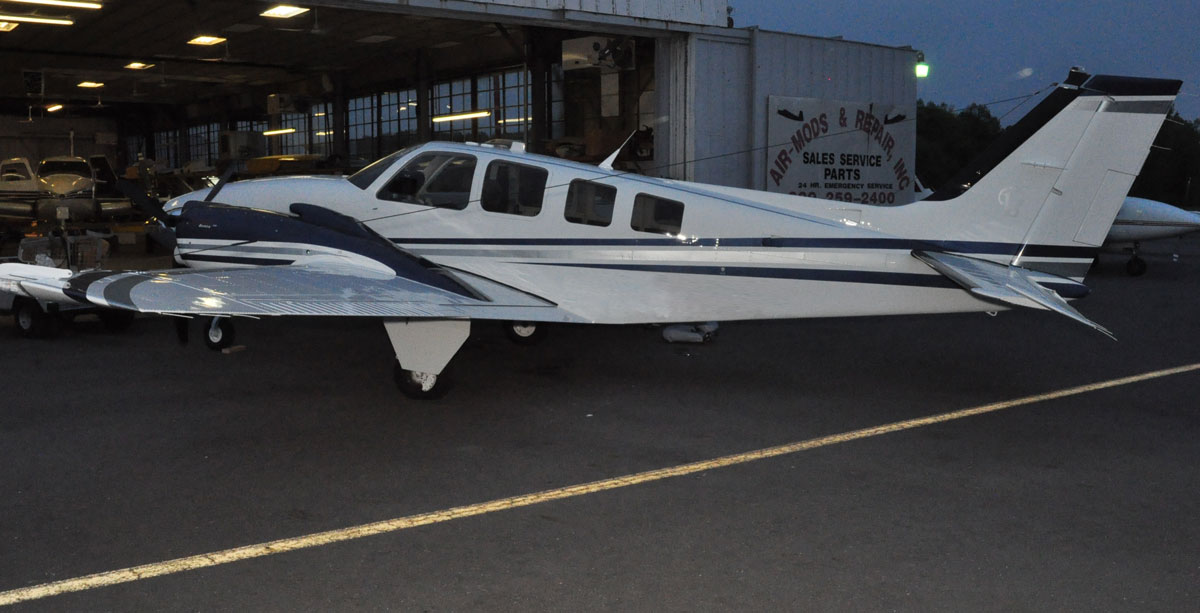
| The installation of the two 100 gallon Turtle-Pacs in the cabin merited a containment structure to allow access via the rear doors and to keep the center of gravity from shifting. | 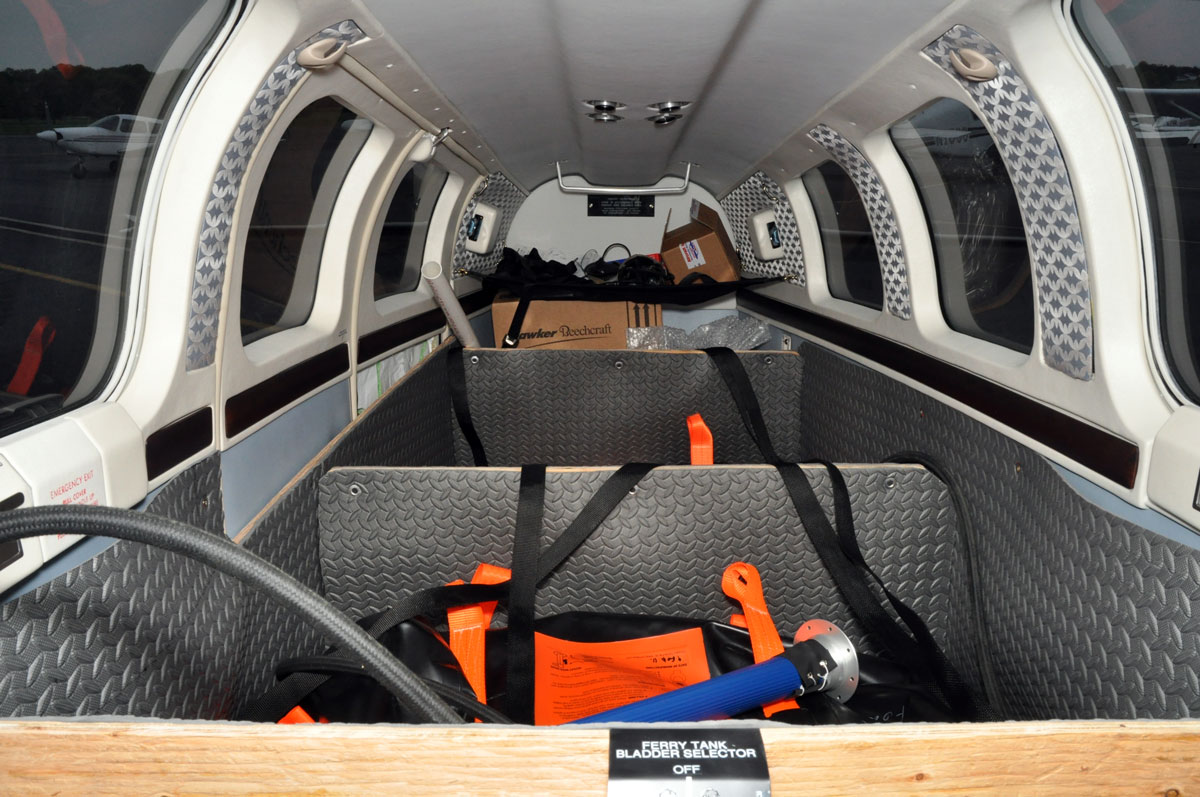 |
| The airplane is expected to fly shorter routes in the future between New Zealand and Australia. For an added margin of safety, we engineered the 37 gallon Turtle-Pac in the nose baggage compartment so that it is easily removed and reinstalled by the owner. | 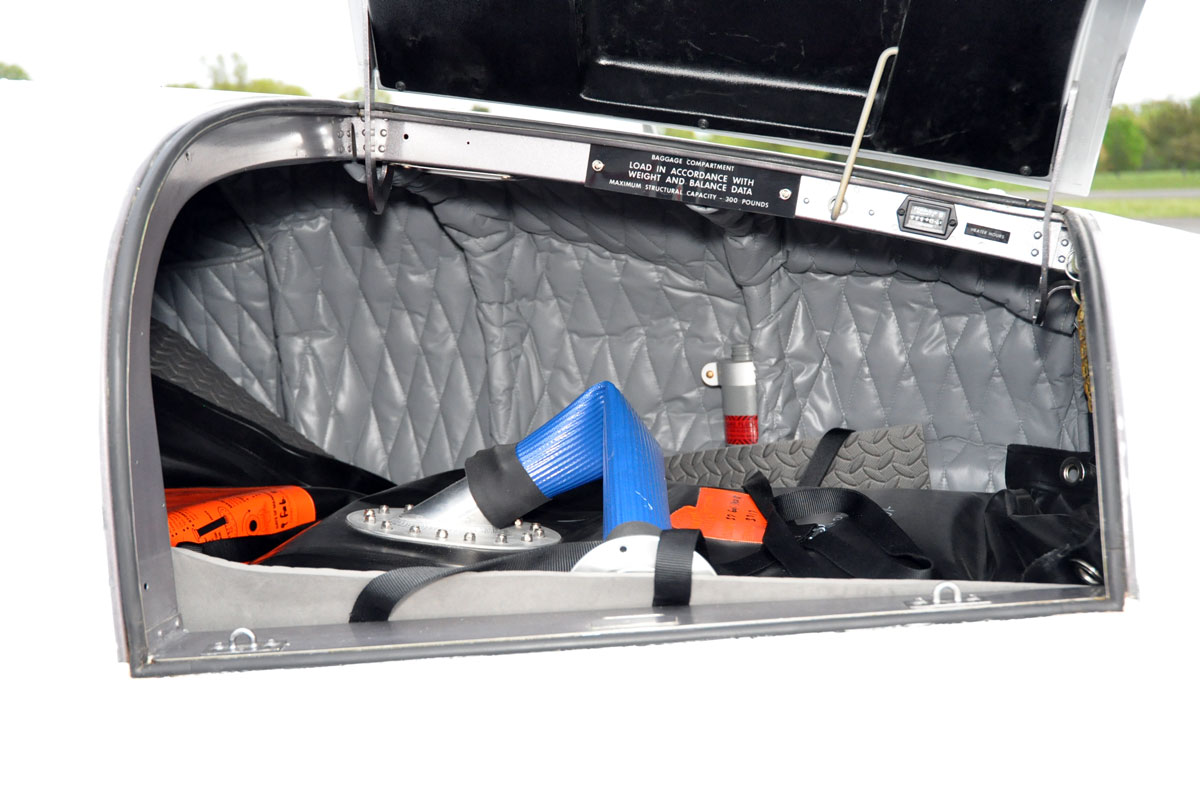 |
| This installation also included easy access to the fuel valves and switches just behind the pilot and co-pilot seats. Our fuel valve allows the crew to select each of the three tanks. The installation provides the safety of fuel pump redundancy while pumping four times the hourly volume required. | 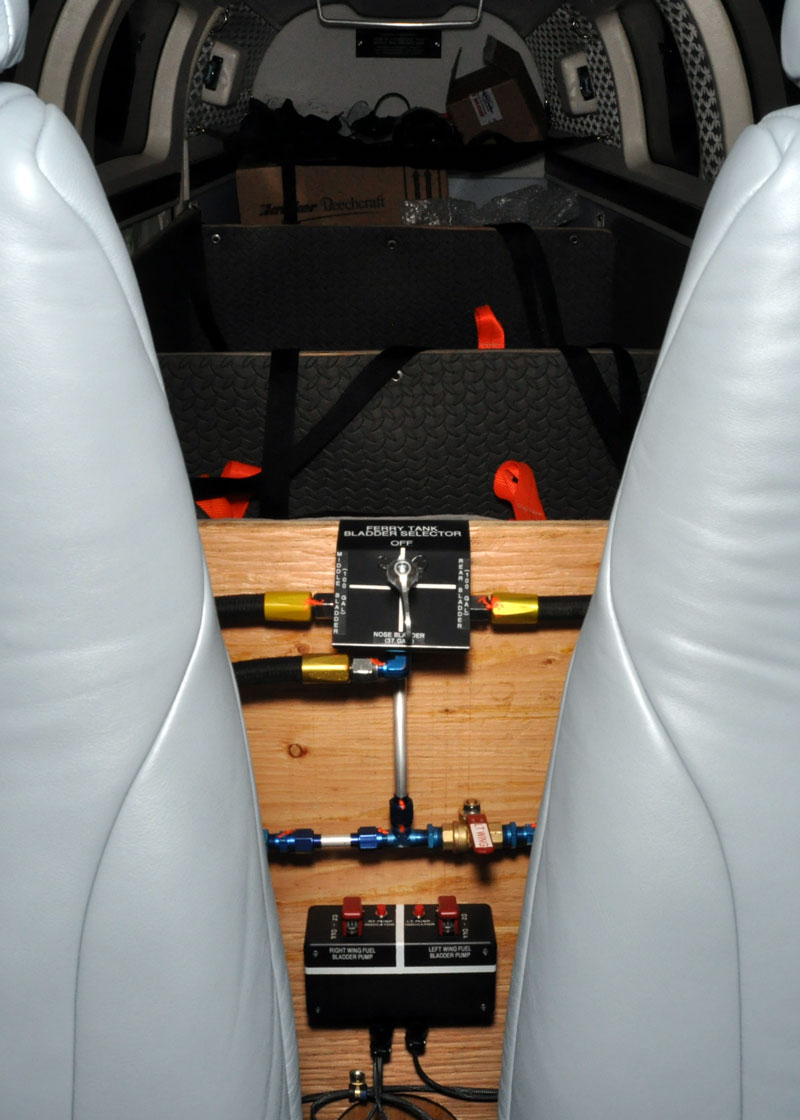 |
Once the installation is completed, we fuel the Turtle-Pacs and conduct our final quality control checks.
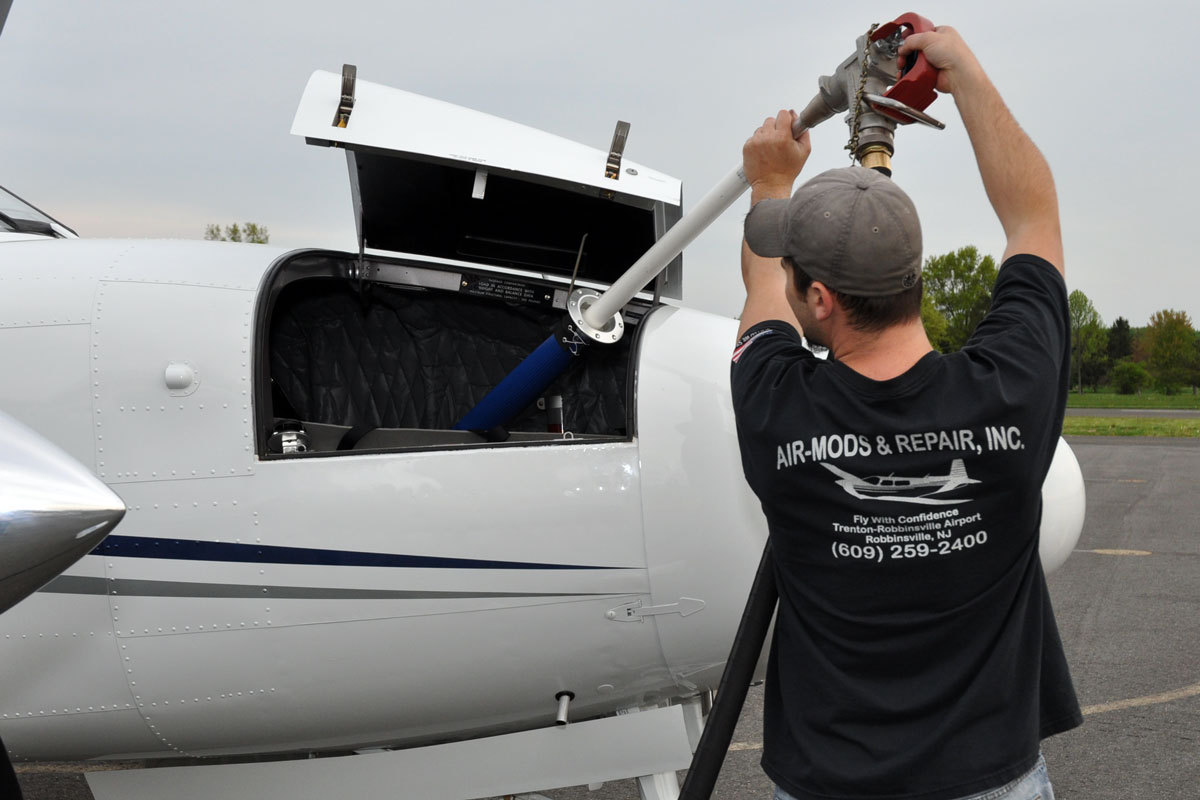
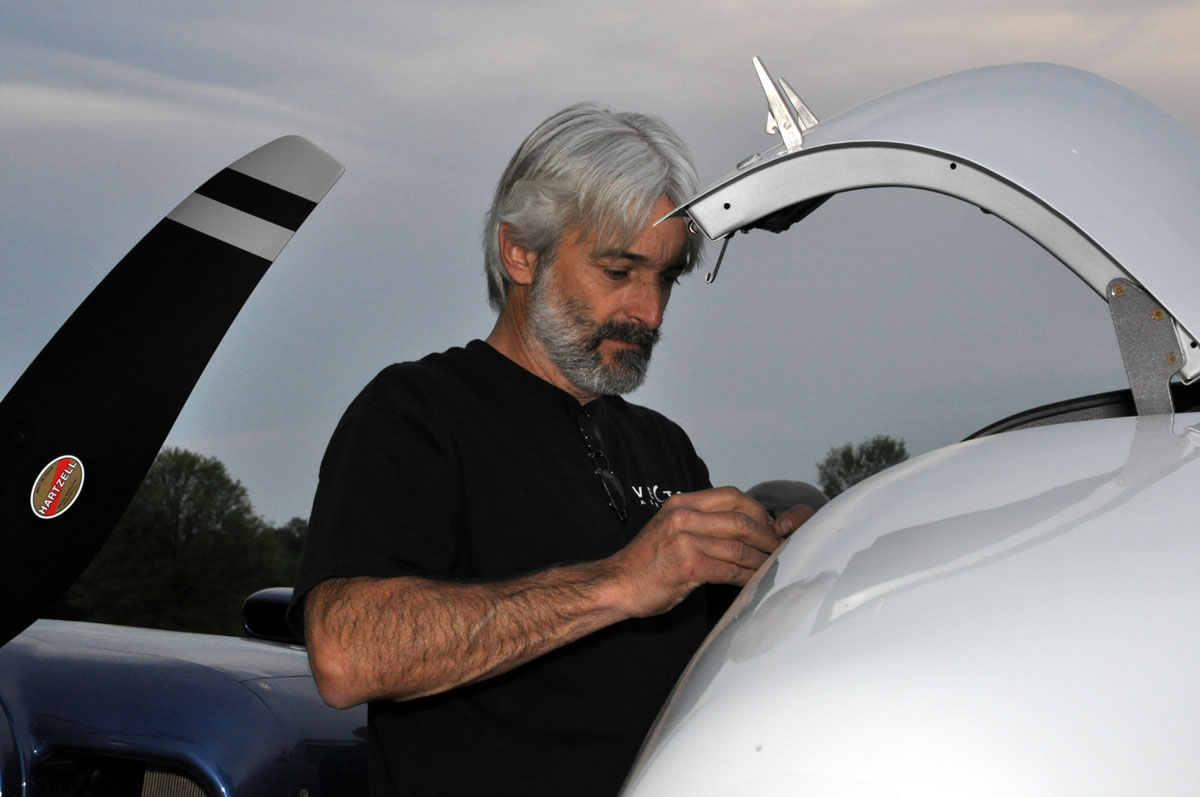
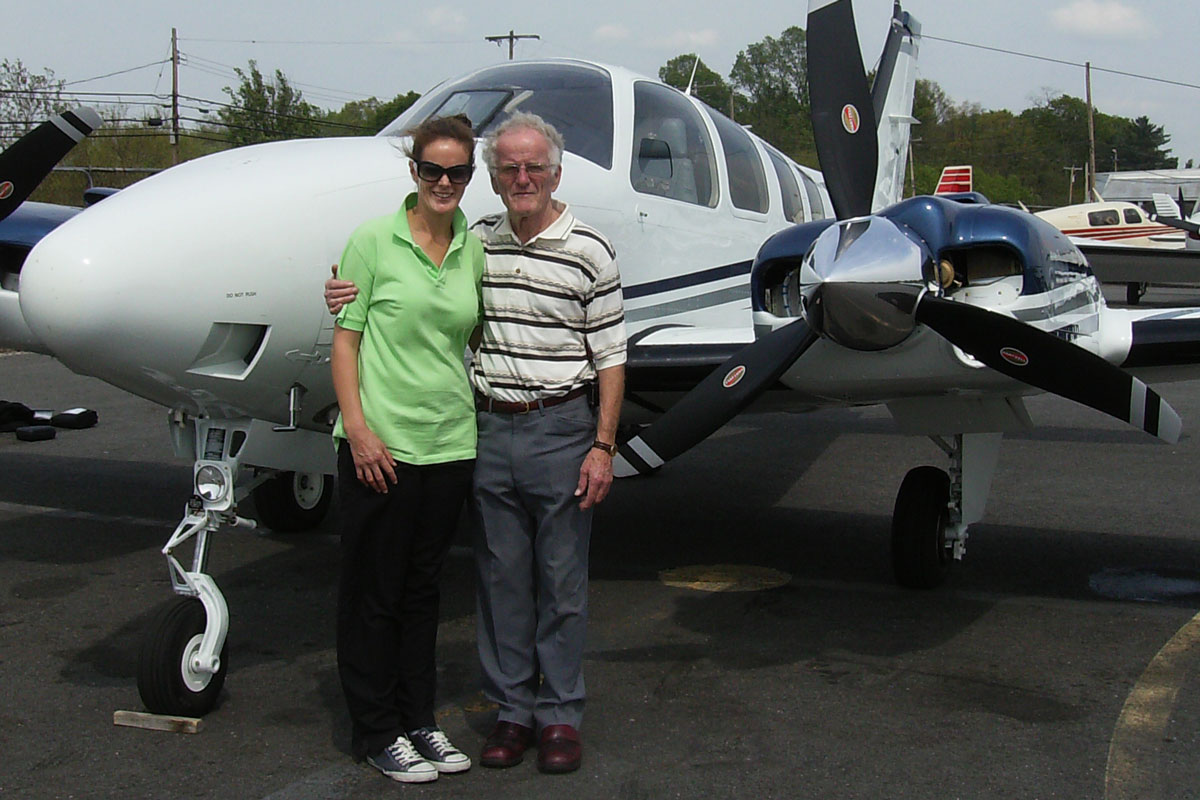 And here’s the proud owner with his co-pilot, who happens to also be his first flight instructor.
And here’s the proud owner with his co-pilot, who happens to also be his first flight instructor.
Mitsubishi MU-2
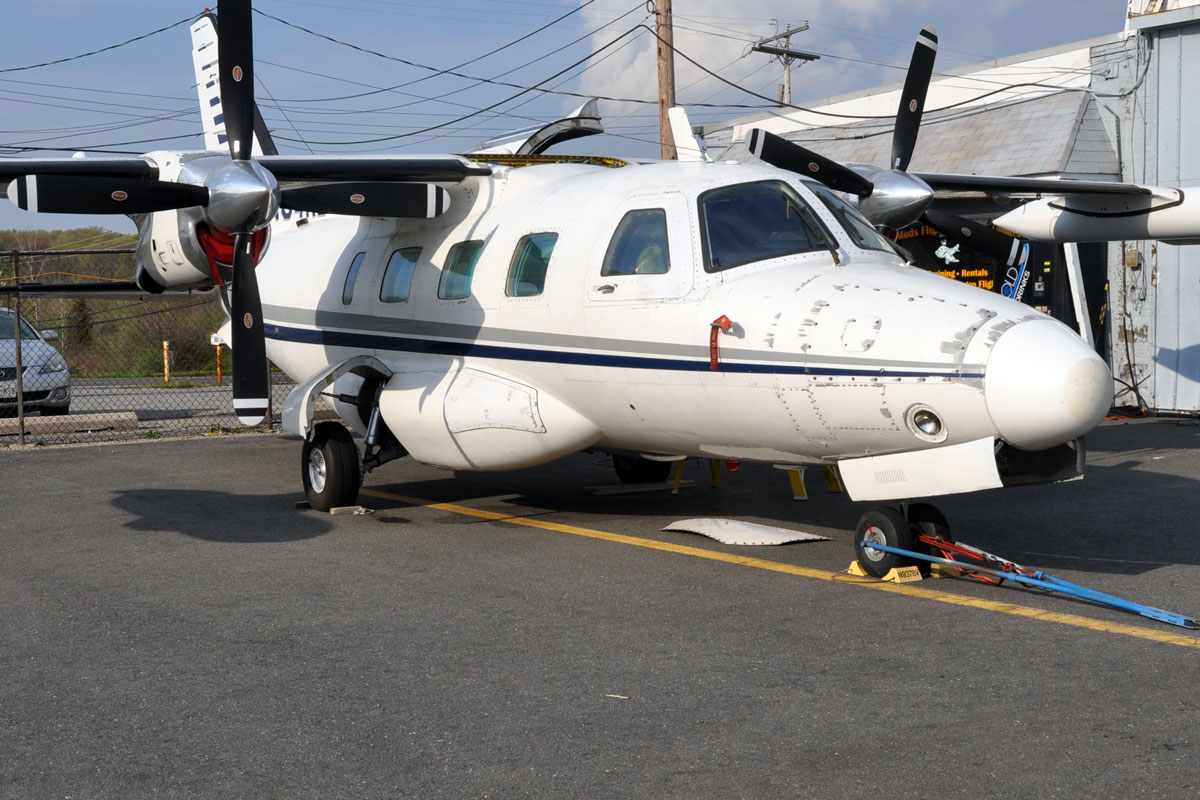 In this installation completed In April 2011, Air-Mods equipped a Mitsubishi turboprop with two 300 gallon Turtle-Pacs for a trans-oceanic flight to the Australia.
In this installation completed In April 2011, Air-Mods equipped a Mitsubishi turboprop with two 300 gallon Turtle-Pacs for a trans-oceanic flight to the Australia.
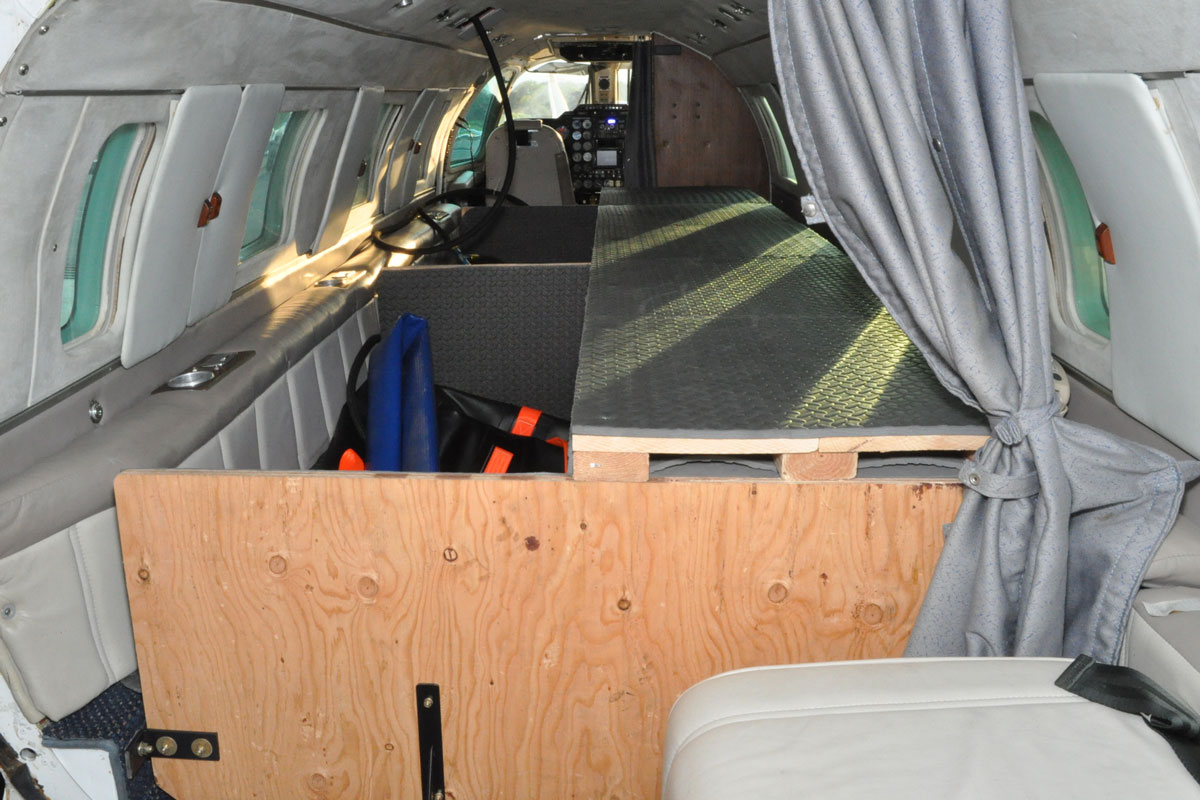 Due to the the location of the only door being at the rear of the cabin, this installation required the fabrication of a catwalk to allow the flight crew to crawl over the Turtle-Pacs to get to the cockpit.
Due to the the location of the only door being at the rear of the cabin, this installation required the fabrication of a catwalk to allow the flight crew to crawl over the Turtle-Pacs to get to the cockpit.
Cessna 206
Turtle-Pac’s ferry tank is usually fitted in the space created by the removal of the passenger seats.

Turtle-Pac’s design typically does not require a supporting structure, although Air-Mods engineers a suitable structure for specialized installations. In the case of this Cessna 206, the installation requirements included the ability to open the dual side doors in order to access the baggage compartment. Air-Mods containment structure allows door operation and, at the same time, holds the tank in place to protect the center of gravity from shifting.

The engineering of the plumbing system is key for reliability and ease of use. Air-Mods designs the system and prepares all of the paperwork for approval by the FAA’s Designated Engineering Representative. Once approved, these documents are attached to the FAA’s 337 Major Repair and Alteration form and submitted for final approval.
This installation also has electrical and mechanical redundancy. The two pumps can either feed their respective left and right wing tanks or, optionally, could be configured to cross-feed into the opposite fuel tanks.

The electrical switches provide redundancy with two switches available that can power each fuel pump. Both switches provide circuit protection to the pumps.

Additionally, the fuel pump electrical system is protected by panel-mounted circuit breakers.
At the customer’s request, additional accessories can be installed such as an independent fuel flow totalizer and annunciator lights specific to the ferry tank.

Final QC inspections are completed prior to the test flight.

Once the ground QC checks are completed, Air-Mods flies the airplane to confirm the correct operation of the systems prior to owner acceptance.
Piper Archer
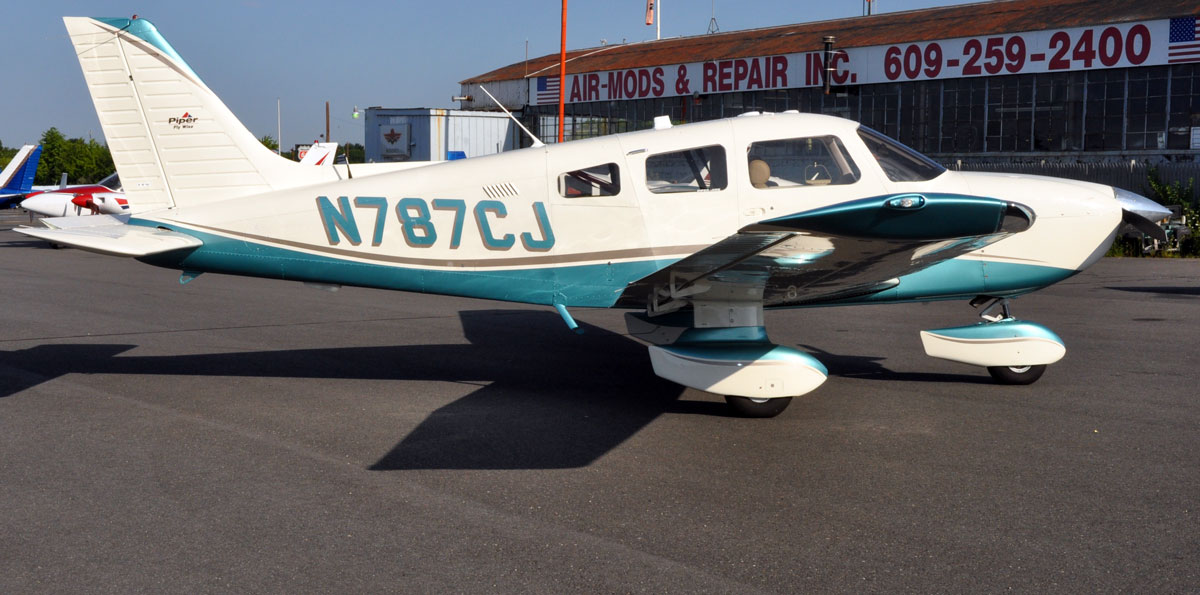 This installation, completed in August 2010, was in a brand-new Piper Archer destined for France.
This installation, completed in August 2010, was in a brand-new Piper Archer destined for France.
The ferry pilot, Aaron Fisher, who recommended Air-Mods to the owner, flew the airplane straight from the factory in Vero Beach, FL to Robbinsville for this custom installation.
The installation utilized the area where the back seats would normally be. As in all of their installations, Air-Mods calculated the precise moment of the Turtle-Pac station in order to determine the center of gravity and revise the airplane’s weight and balance. While Turtle-Pac’s design typically does not require a supporting structure, Air-Mods engineered and installed a containment structure as an added measure to hold the tank in place and protect the center of gravity from shifting in flight.
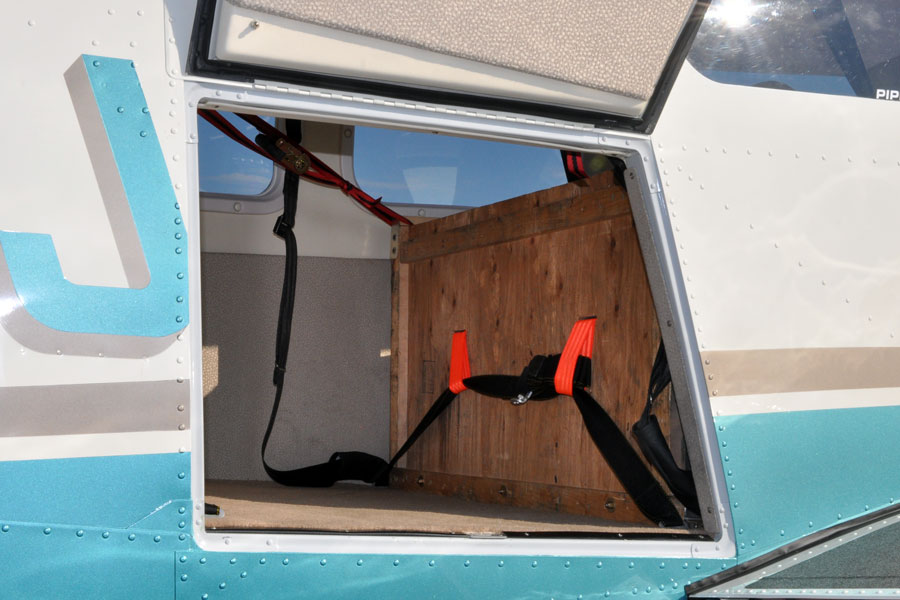
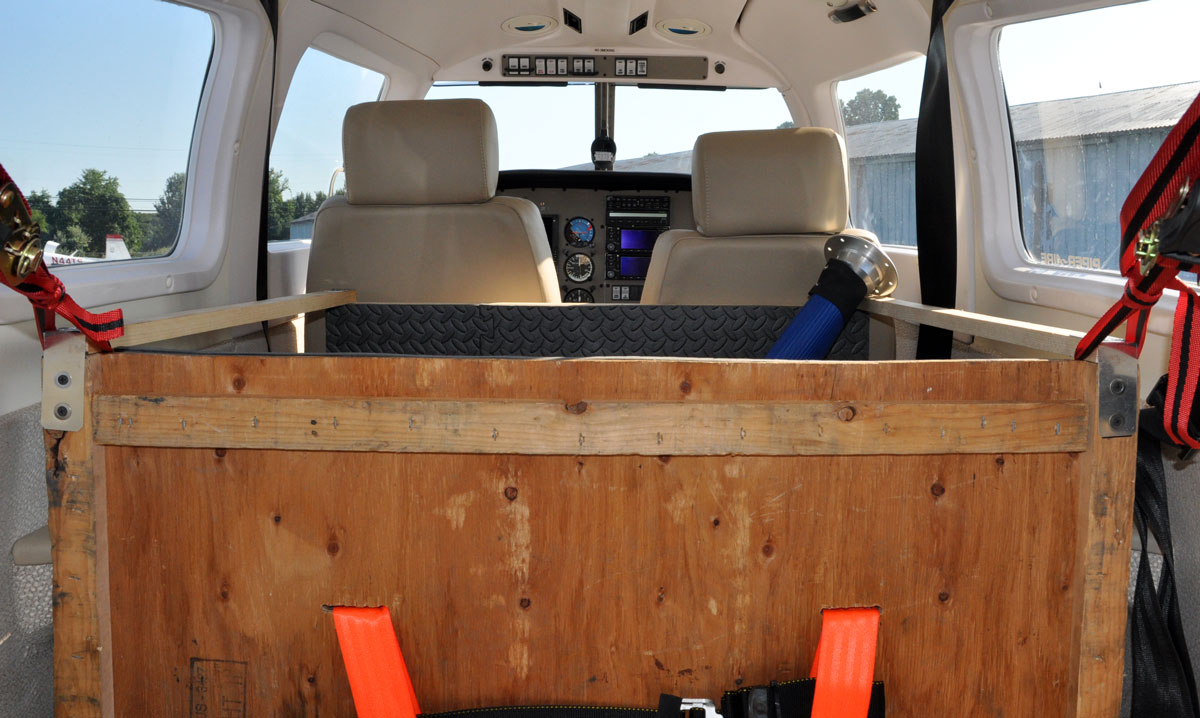
This installation was kept very simple. Air-Mods installed a transfer pump to transfer fuel from the Turtle-Pac to the right tank eliminating the need for additional valves and plumbing. As you can see from the photos below, the installation provides easy access for fueling and maintains ample space for the pilot and co-pilot.
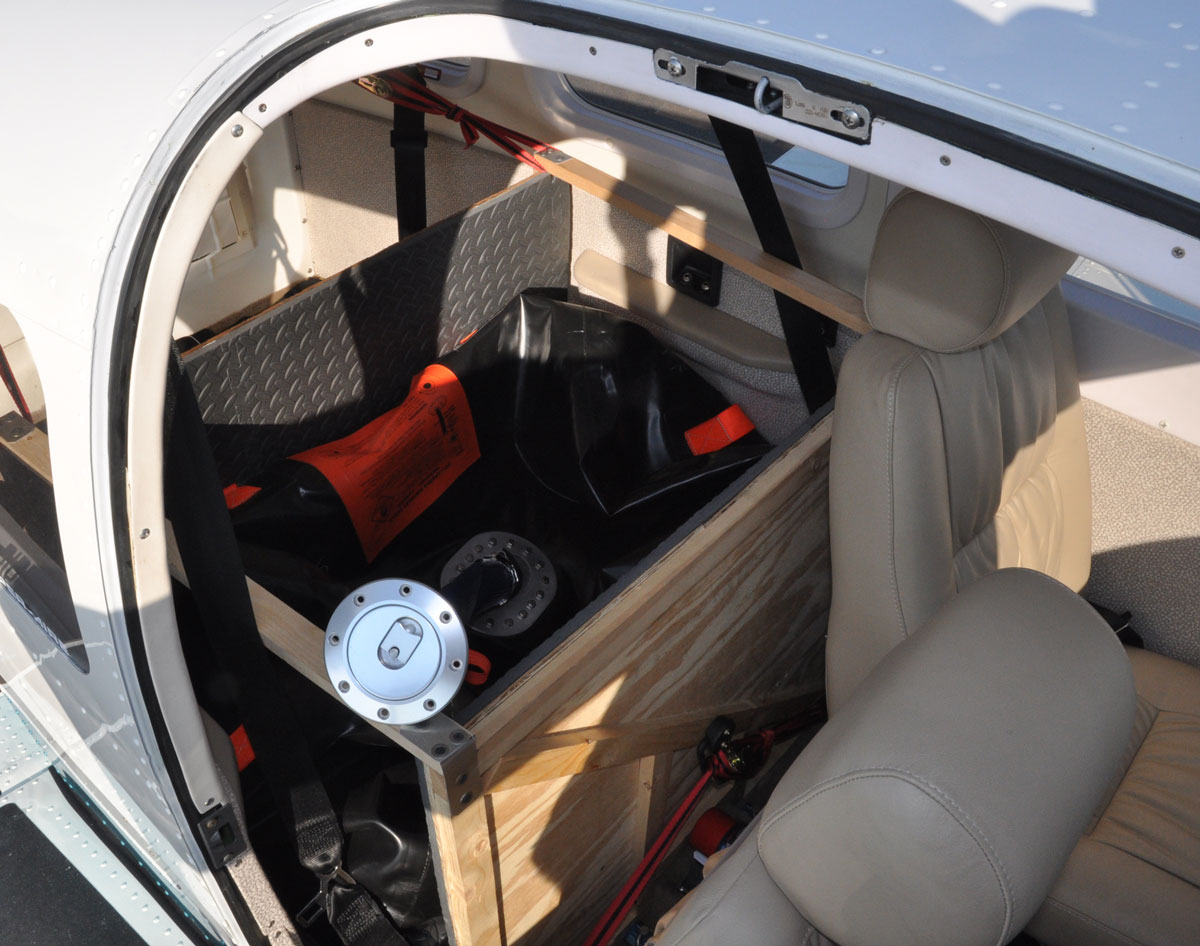
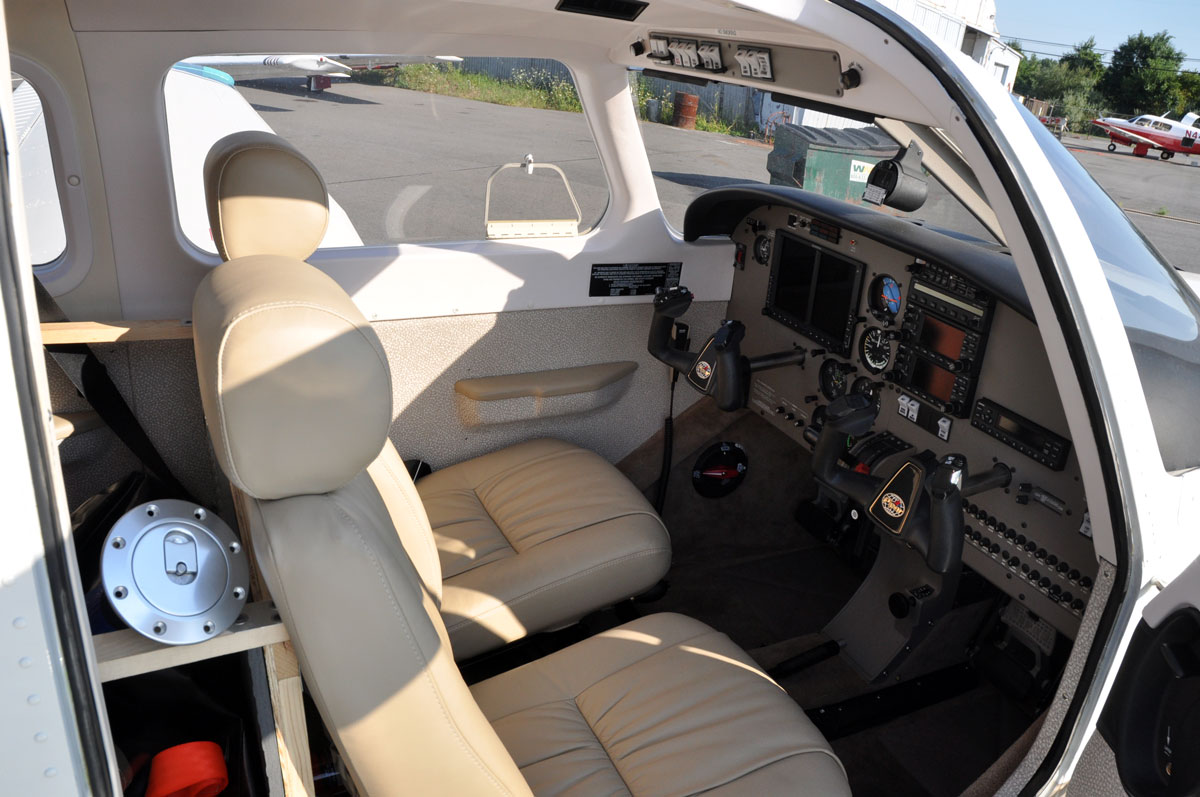
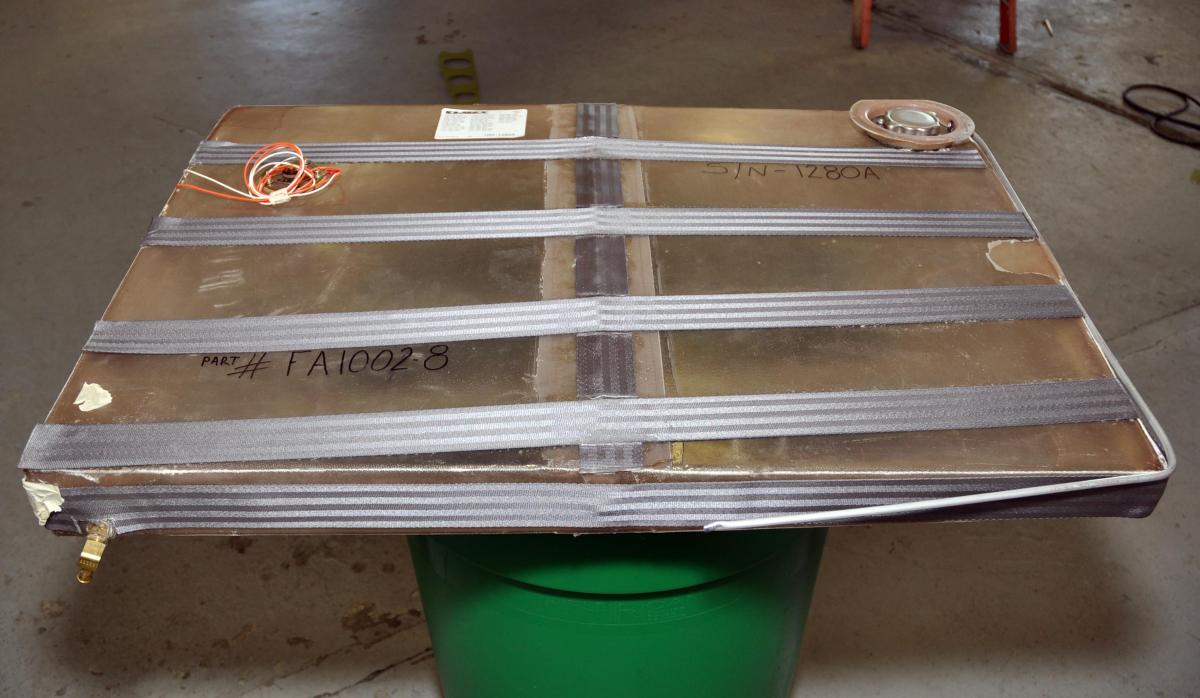
Cessna 180K
This installation, completed in early November 2010, is for a 1981 Cessna 180K. It includes Flint Aero internal tip tanks and a Turtle-Pac ferry tank.
To the right is one of the two Flint Aero tip tanks. Each tank holds 12 gallons of fuel with 11.5 usable. Note the gray anti-abrasion strips bonded onto the tank to prevent chaffing.
The Flint Aero tanks fit into the outboard section of each wing.
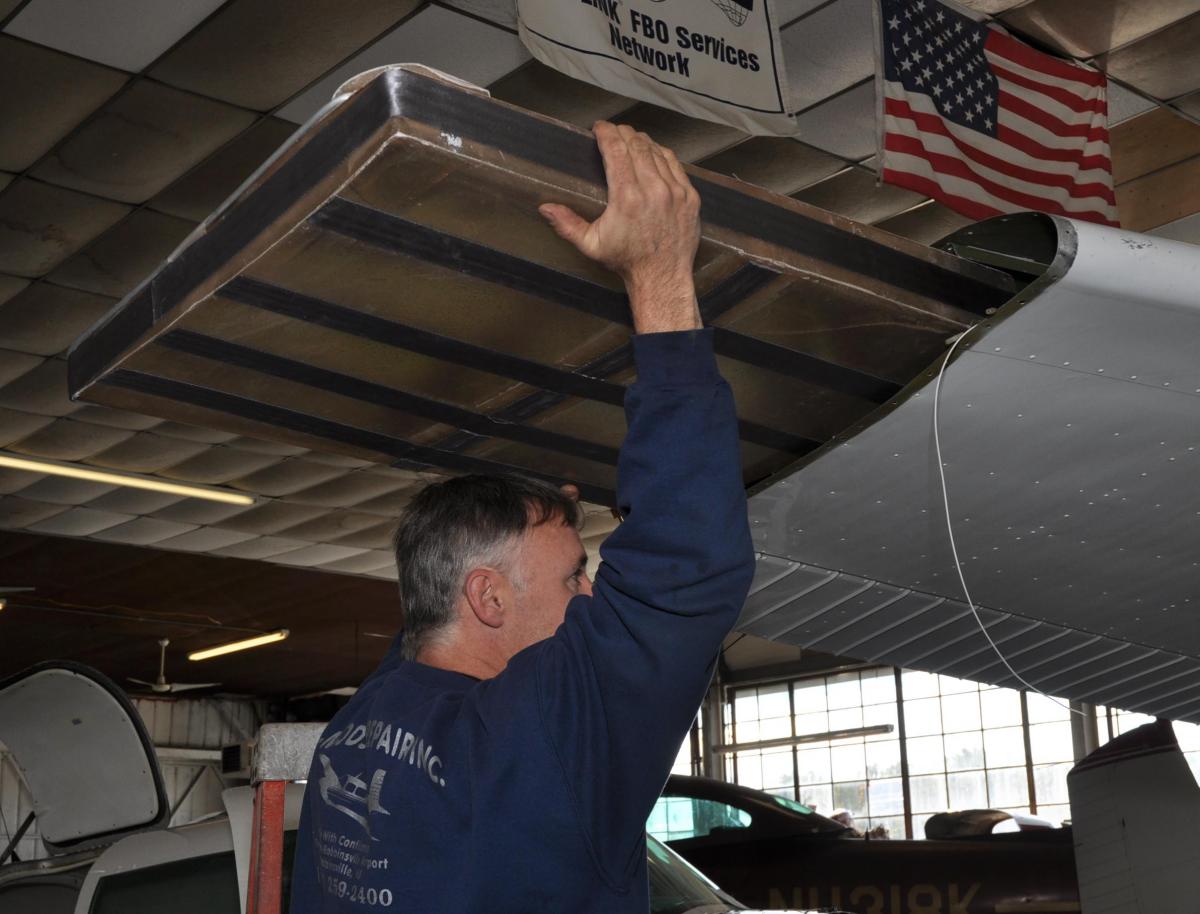
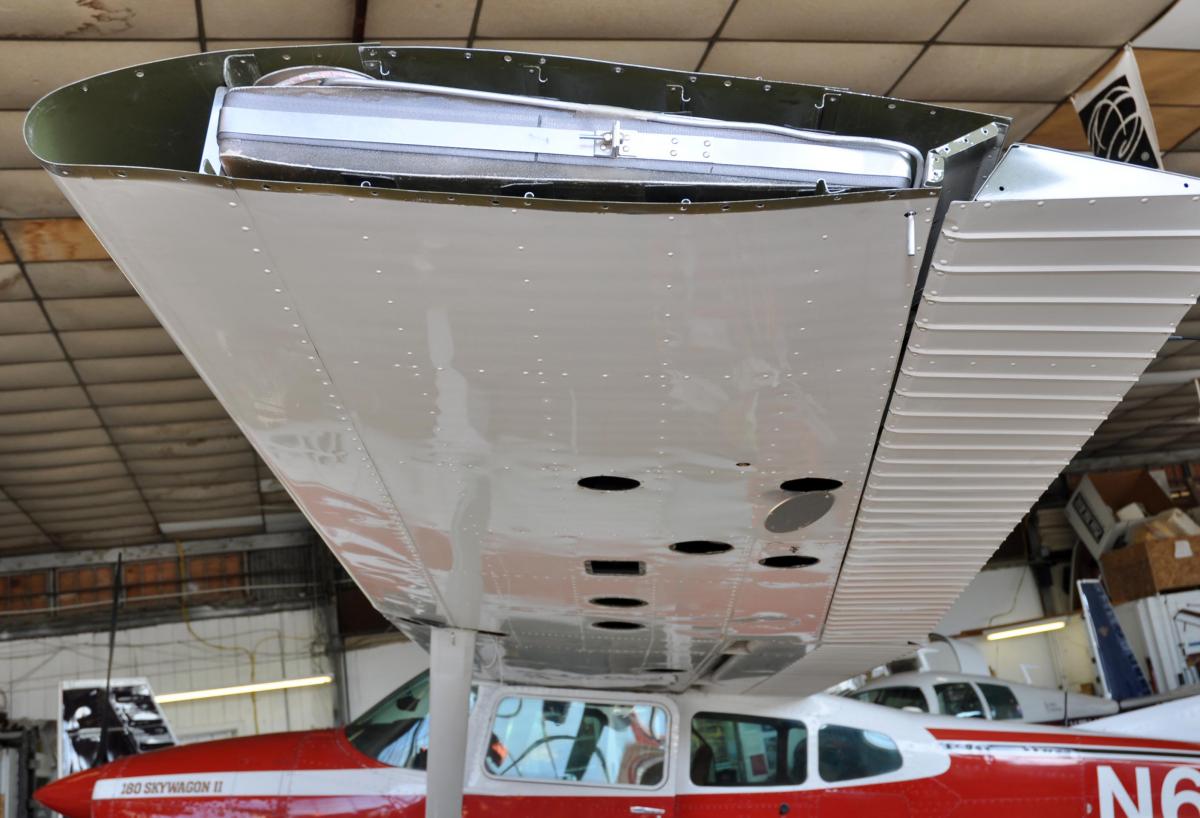
The Flint Aero installation includes plumbing into the main fuel lines and their own fuel gauges (center gauge).
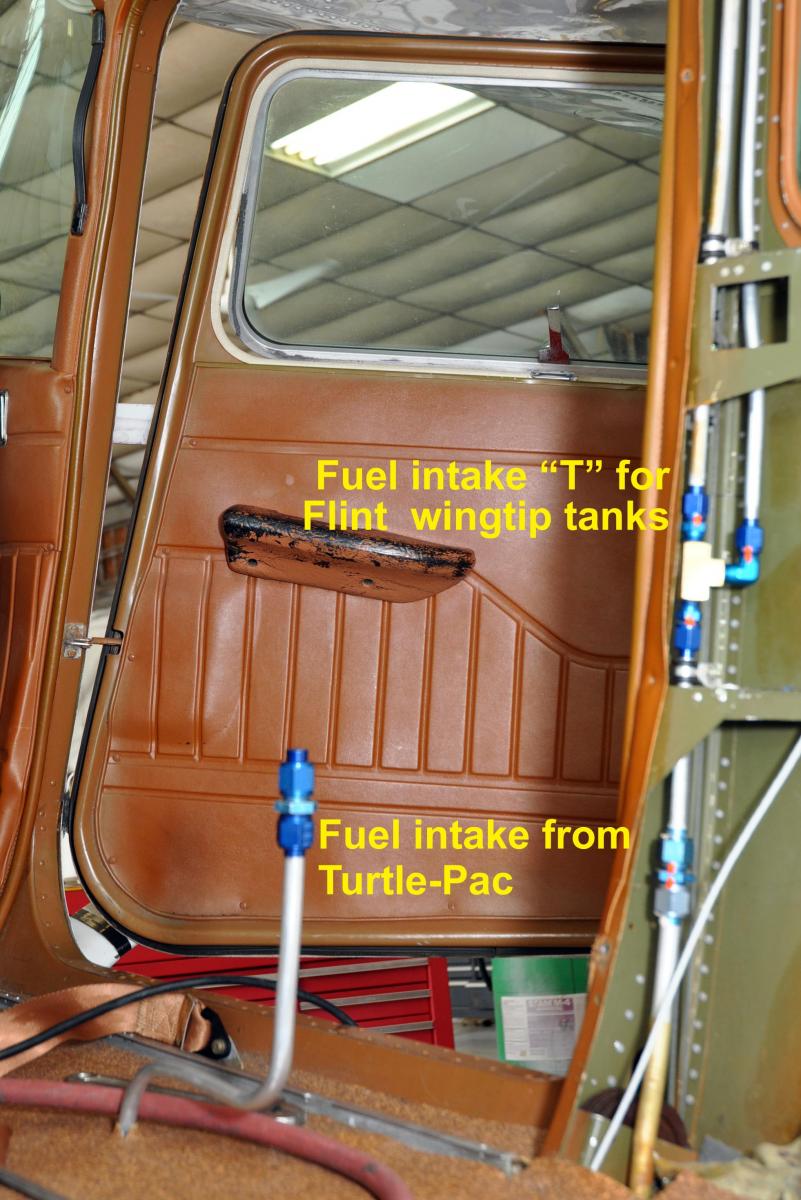
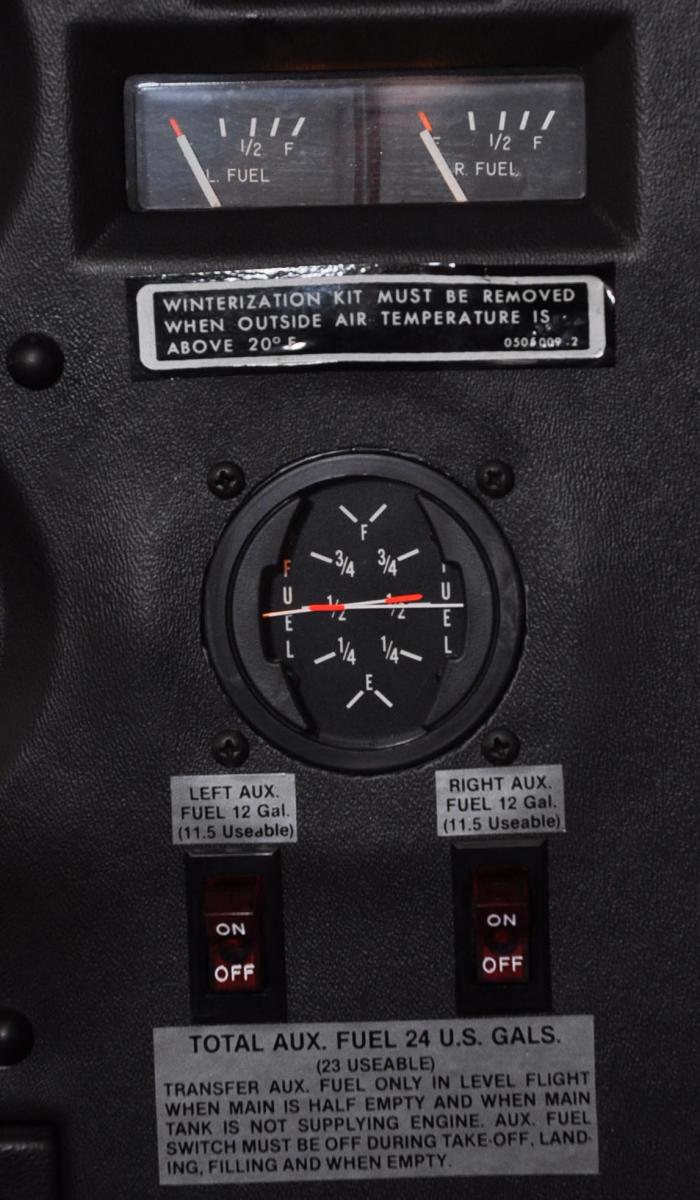
The Turtle-Pac installation sits in place of the back seats and provides easy access to the fuel valves and dual fuel pumps.
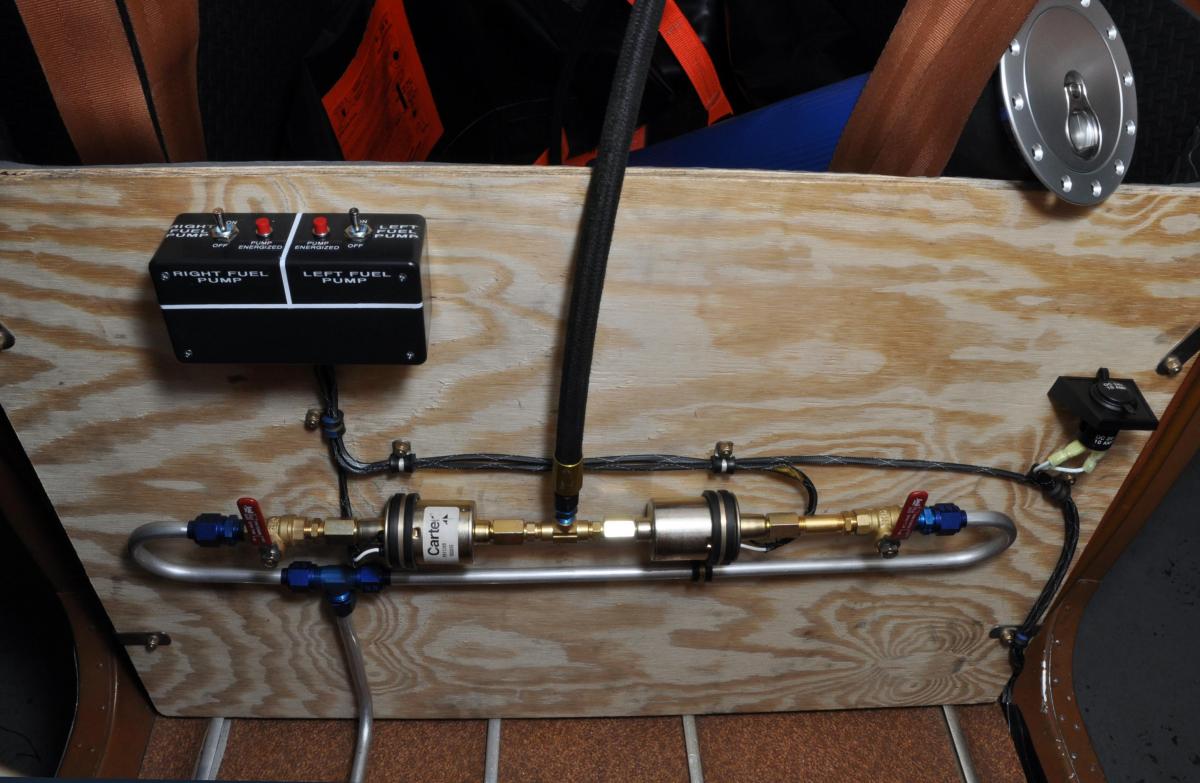
ATR-42
For information on yet another Turtle-PAC installation along with the Beechcraft Baron around-the-world story, click here
